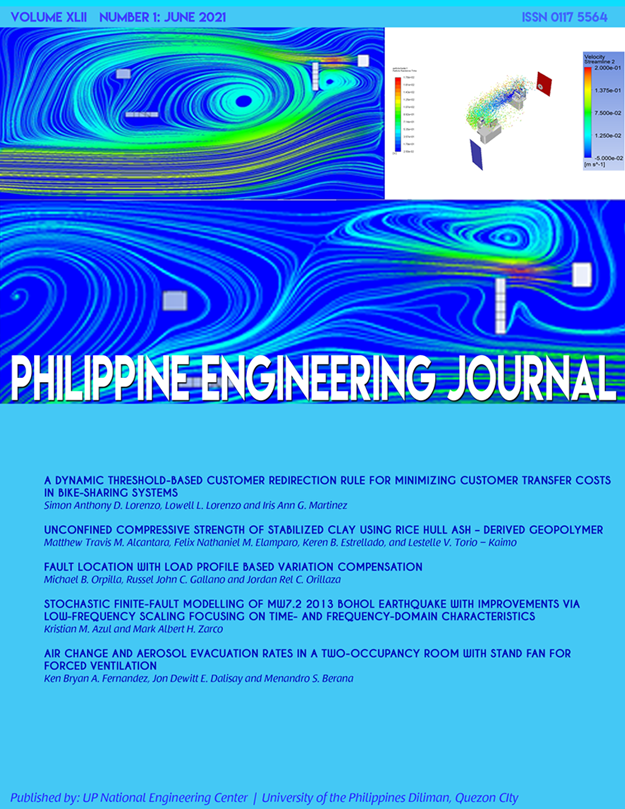Stochastic Finite-Fault Modelling of Mw7.2 2013 Bohol Earthquake with Improvements via Low-Frequency Scaling Focusing on Time- and Frequency-domain Characteristics
Abstract
Abstract — The deleterious effects of strong ground motions of earthquakes on structures are dependent on many factors which include the source, path, site, and as well as dynamic characteristics of the structure. Simulations of the strong motions corresponding to the October 15, 2013, Bohol earthquake were performed using a stochastic finite-fault modeling method while exploring the effect of low-frequency scaling. The simulated motion was then compared to the actual recorded ground motions using the peak ground acceleration, arias intensity, cumulative acceleration plots, Fourier amplitude spectrum, predominant frequencies, and goodness-of-fit values. Base simulations showed great similarity in overall envelope shape and PGA value. However, it was shown that simulations needed modification in the low-frequency range to better match the actual recorded motions. Improvement in the agreement between the simulated and recorded motions was achieved in both frequency-domain and time-domain characteristics, as well as goodness-of-fit values, after low-frequency scaling was applied. Although low-frequency scaling resulted in an accelerogram whose certain characteristics are closer to that of the recorded ground motions, it also resulted in an overestimated PGA value.
Keywords — Earthquake Simulation, October 15 2013 Bohol Earthquake, Stochastic Finite Fault Model


